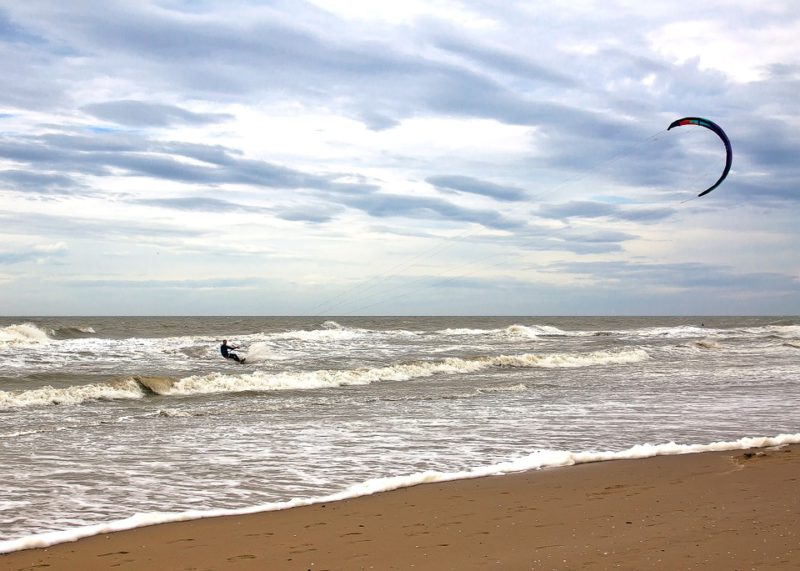GUIDES

Kitesurfing Lessons and How to Look After Your Kitesurf Gear
Many former windsurf enthusiasts have now moved to kitesurfing which has grown immensely in popularity in recent years. I was attracted to kitesurfing by the minimalism of the gear compared with windsurfing and so I decided to take some lessons at the Kitesurf Centre at Camber Sands.

The course lasted a few cold windy days and I took the train down to Rye from London and cycled down to the coast to the hut on the beach.
The first section of the training was of course running through safety information but we were soon on the beach using a training kite to learn how to keep the kite hovering in one place above you, as well as diving the kite down to the left and right. If anyone is interested in getting a taste for the most important component of kitesurfing, I would recommend buying a training kite and learn to use it on your nearest flat, coastal beach. If you are in the UK, the east coast is ideal.
The second section of the training involved getting set up with the real kite, launching it and walking it down the beach to the water. This involved how to lay out the kite lines in the right way so they don’t get tangled, keeping the kite stationary whilst on the beach preparing to launch as well as correctly using the body harness.

We worked with others in the group at each stage. The kites we used had a cord that meant you could depower the kite in mid-flight. I was surprised at how much control you felt you had over something that can look so insanely dangerous to an onlooker. However, the presence of the power of nature was always etching caution into my mind.
The next section was doing ‘body pull’ in the water which involved using the kite to pull yourself along. The motion of the kite ideally is a vertical sine wave.

The final section involved putting everything together with the board and attempting to power dive the kite, whilst getting onto the board enough to start moving across the water. This was something I managed to do but unfortunately only for brief periods. Across the days the wind picked up and the conditions for learning became increasingly difficult. I was pleased in the end to receive my basic proficiency card. This card is required if you wish to hire kit at reputable kitesurfing centres.

Kite Maintenance
- Regularly check the kite
- Repair damage before flight.
- Flick off all sand before tightening fly lines to pig tails. Tight knots filled with sand will damage the lines.
- Don’t leave your kite on the beach.
- Don’t use chemical detergents on the kite.
- Clean the kite using low pressure and fresh water only.
- Roll your kite up on sand or grass. Do not roll on concrete, bitumen or sharp rocky ground.
- Roll and store your kite dry. Fresh water will turn into mould.
- Store your kiteboarding gear in a shaded ventilated area.